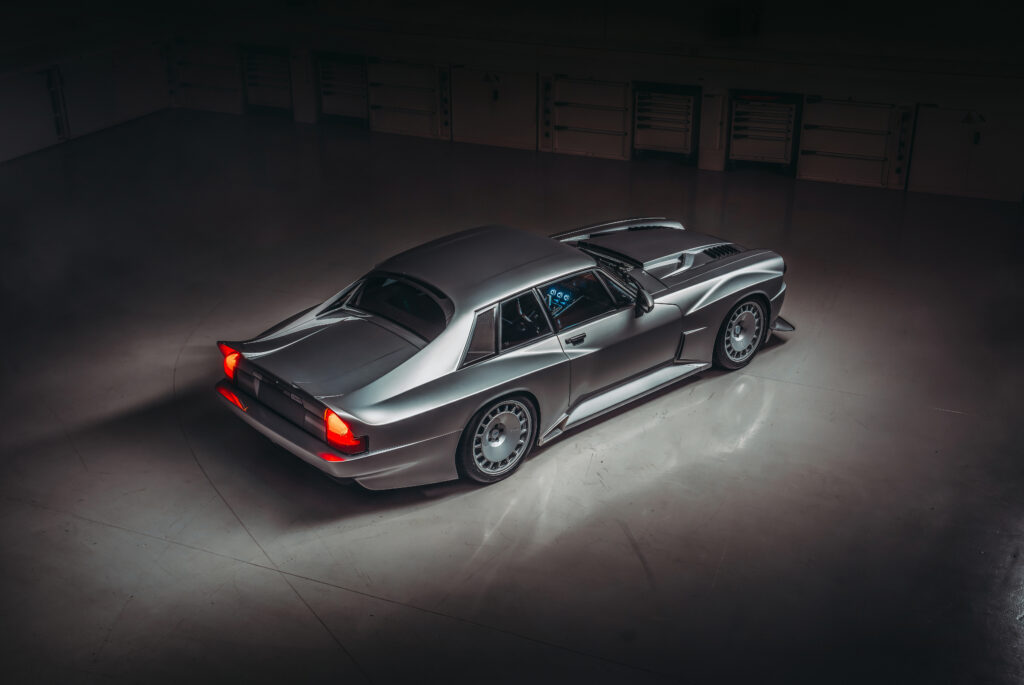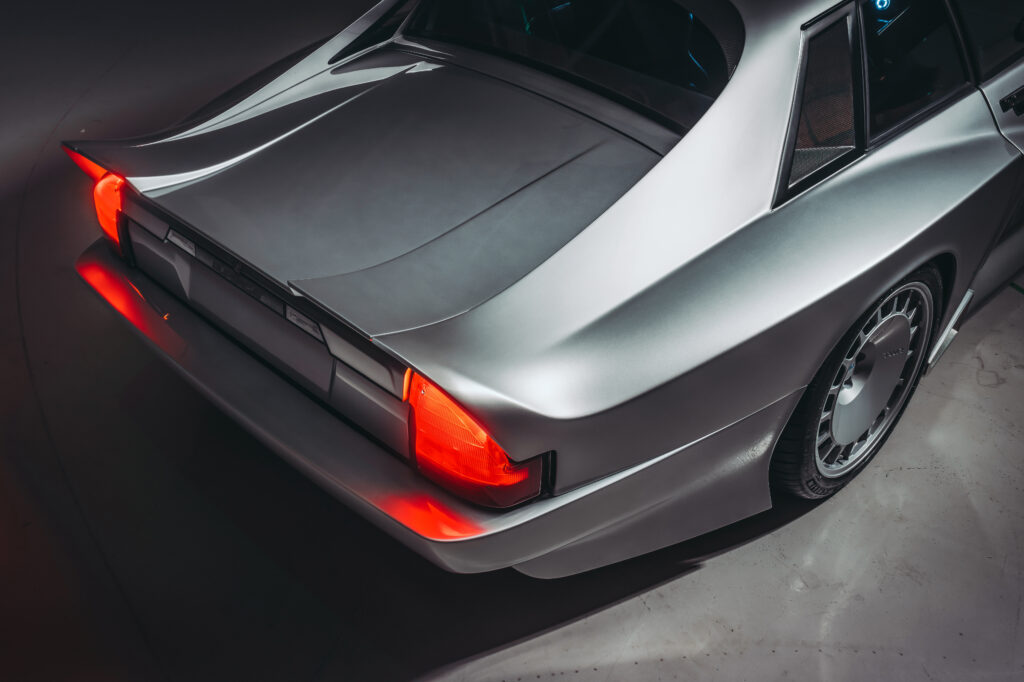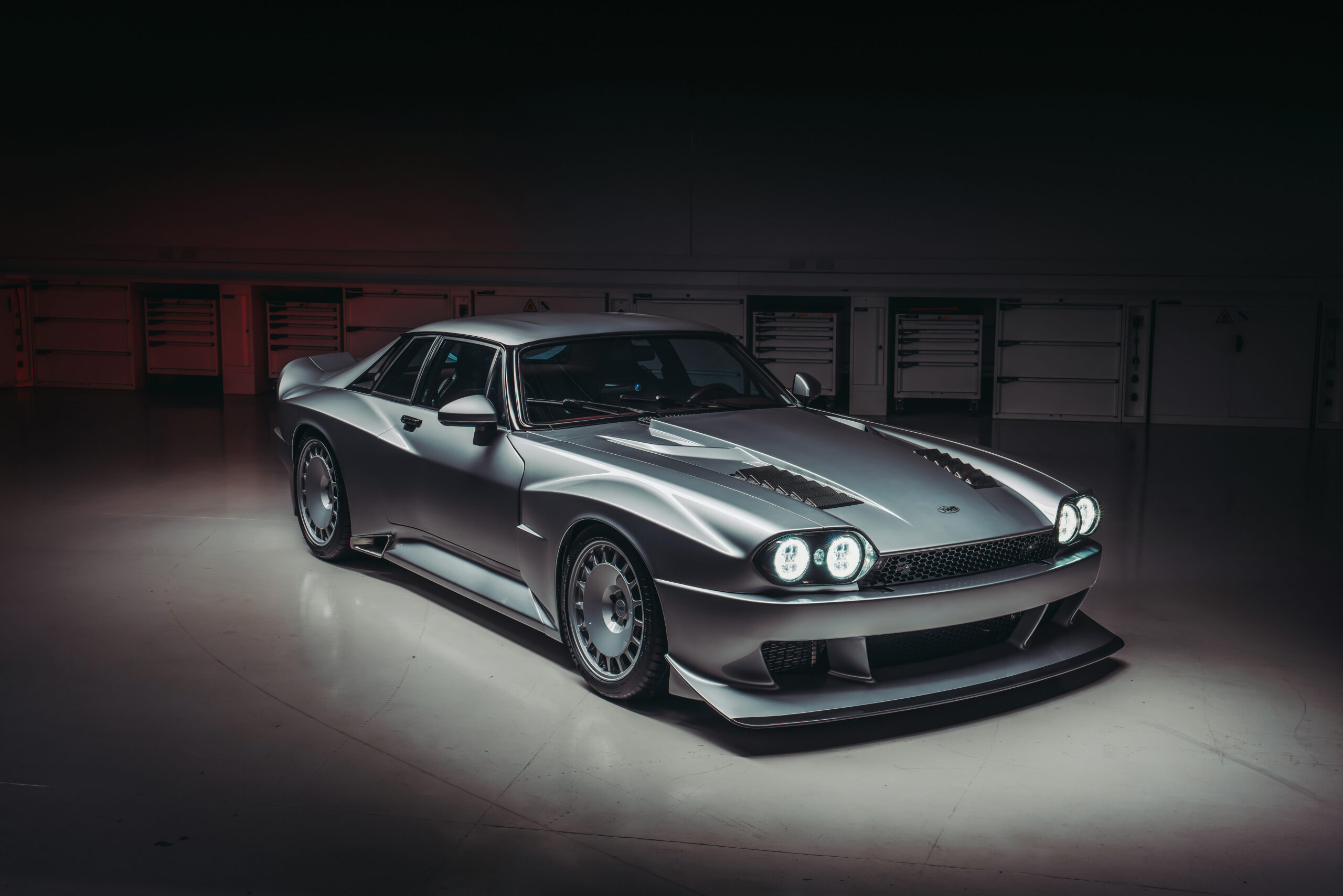Scottish touring car ace Tom Walkinshaw saw great potential in the Jaguar XJ-S. Not only did he develop the car into a race-winning competitor, he later convinced Aston Martin to make use of the platform in the DB7.
Now Walkinshaw’s son Fergus, together with an eclectic team of financiers, engineers, and designers, is taking the XJ-S to new heights with a remarkable restomod that has been built to handle continental cruising and turn blistering lap times in equal measure.

The story of this car begins in 1982, when Jaguar approached Walkinshaw to take on the XJ-S as a successor to the failed XJ-C and make some inroads into the European Touring Car Championship against rivals BMW. Having twice the cylinder count of its competitors wouldn’t have hurt, but the fact that Walkinshaw made the XJ-S both fast and dependable was impressive. So impressive, in fact, that Walkinshaw and teammate Chuck Nicholson won at Brno, the Nürburgring, Silverstone, and Zolder. In 1984, TWR would win the championship and give Jaguar its first 24-hour race victory since 1957, when an XJ-S crossed the line first at Spa-Francorchamps in Belgium. Further afield, the TWR Jag also won the Bathurst 1000 in Australia.

These successes were just the beginning of a glorious relationship with Jaguar that would see TWR build the Le Mans-wining XJR-9 of 1988, the XJR-12 which won the same event in 1990, and the road-going XJ220 and XJR-15 supercars. TWR would also go on to run race teams for Volvo in the British Touring Car Championship and assemble road cars as diverse as the XJ-S–derived Aston Martin DB7 and the crazy mid-engined Renault Clio V6.
Walkinshaw passed away in 2010 – gone but never forgotten by a legion of fans the world over. It’s for them that Fergus and his team have revisited the XJ-S, transforming it from the elegant 1980s Grand Tourer into the TWR SuperCat.
“Myself and John (Kane, co-founder) were just talking about different ideas and history and thought why don’t we do something together and see if we can relaunch the brand and get it back out there and get it back on at the forefront of automotive technology and engineering,” explains Fergus. “From that we batted around a few different ideas and eventually settled on doing the XJ-S as our first project.”

At first glance of the SuperCat, it’s like seeing actor Alan Ritchson bursting out of a too-tight suit as Jack Reacher. It’s intimidating, and you wouldn’t want to get on the wrong side of it, but after the initial shock, you spot a suave edge. If you happen to see a little Aston Martin Victor in it, you won’t be the only one.
The design is a Transatlantic collaboration between Khyzyl Saleem in the UK and Magnus Walker in the US. Walker’s role has been more advisory than hands-on, with Saleem doing the penwork. Not that he actually used a pen, of course. Saleem’s skills were honed wholly in the digital realm. Having become Insta-famous for his hyper-realistic renderings of wide-bodied road and race cars, he worked on video game vehicles for Electronic Arts and then set up Live To Offend, a company specializing in body kits for the likes of the E30 and E36 BMW 3 Series and the Mazda RX-7 FD.
The SuperCat was Saleem’s first chance to design a real car from scratch and, while it was perhaps quite a risk for TWR, it was one that Walker also fully endorsed.
“Once we’d spoken to Khyzyl we went to see Magnus in California,” says Kane. “As soon as we sat in front of Magnus he said, “Oh, I’d love to work with this guy in England called Khyzyl, do you know him?”
“To be given this opportunity to work with the necessary people in order to make this car perform and to live up to its heritage, and also what we plan for the future has been a very fun process,” says Saleem. “And genuinely it wasn’t that difficult. I was given a brief by the guys here, and my design inspiration is, in general very ’70s and ’80s. I was just obsessed with IMSA race cars – they were so radical in their design, but in their function as well – plus super silhouettes, Japanese touring cars, British touring cars, that’s what inspires me to design.



“I pitched the V1 design, and we were all in agreement straight away that this was pretty much the direction that we wanted to head in. We’re using inspiration from the XJR-9, XJR-15, and the XJ220, which hopefully you’ll see somewhere on the car. And it all just came together. We went through thousands of hours of CFD testing and aero testing as well to make sure parts we were designing allow air to flow around the car properly.”
Saleem says that for him the highlight of the design was making those XJ-S trademark flying buttresses actually serve an aerodynamic purpose, helping channel the air through to the Kamm tail rear to create serious downforce. The exact amount has yet to be measured, but given that the original car was prone to lift, it’s definitely going to better.
And it will need to be, for the SuperCat is expected to be a 200mph machine. Given that the test mule has already topped 180mph without any of the aerodynamic advantages of the production car, this seems quite credible, and it’s all thanks to TWR’s take on the Jaguar V12.

Only the block, cylinder heads, and crankshaft are retained from the original motor. Capacity goes up from 5.3 to 5.6 litres, and all internals are upgraded from the forged pistons to a new valvetrain. There’s forced induction courtesy of a centrifugal supercharger, dry-sump lubrication, and a cooling system with six radiators. When it left the factory, the V12 made 289 horsepower at 5500rpm 318lbft of torque at 3000rpm. On TWR’s dyno, the revised motor delivers 670bhp at 7600rpm and 538 bft at 5350 revs.
“We went with a centrifugal supercharger rather than a positive-displacement supercharger because with the positive-displacement, you get that big wallop of torque at the bottom end, and then it trails off. Whereas centrifugal, it’s a lot more linear power delivery,” explains Walkinshaw, who developed the powertrain himself.
The lethargic three-speed slush box is thrown out, to be replaced by a six-speed Tremec manual transmission, driving the rear wheels via an aluminium prop shaft and mechanical limited-slip differential.
Clearly that’s more than an early ’80s chassis could ever handle, so TWR massively stiffened it with an integral roll cage, together with new front and rear subframes. Tractive adjustable dampers are fitted to TWR’s own double-wishbone front and multi-link rear suspension. Steel or carbon ceramic brakes are offered, grabbed by six-piston front callipers and four-pot rears, and there’s a 12-way adjustable ABS system.


There’s an 18/19-inch wheel combo to TWR’s own design wearing Michelin tires, and further driver aids include variable electric power steering, a five-stage traction-control system, five different drive modes, and launch control.
Stripping away all the original body panels and replacing them with the Saleem-designed versions in carbon fibre reduces the weight by some 300kg, to bring the SuperCat down to 1500kg.



There’s been no skimping on the creature comforts, however, with an all-new interior design that mimics the original gauges in a digital display, but is otherwise a world away from the donor car. Carbon-backed Sabelt seats are installed, there’s a Tilton pedal box, nicely turned metal switchgear, and high-quality leather throughout, with a luggage space in lieu of the rear seats which can extend into the trunk. The brown colours and grey exterior of the first pre-production model were chosen by Walker but customers will have an unlimited palette.
So, just who are those customers? According to Kane, they’re not collectors seeking to add another car to a humidity-controlled warehouse, but enthusiastic drivers wanting one bespoke car to do everything for them. “It’s a GT that you can travel to Europe and you can take all your luggage in it, but at the same time, all our background with the team and the development side is all motorsport, so it allows you to then go on track, and it’s built to withstand that, and then drive back again.”
With only 88 SuperCats to be built, quite keen pricing of £225,000, and several orders already in the books, it looks like TWR could once more be off to a racing start.







Look at the stance. Ken Block lives!
Fantastic, just wish I had £225k to spare! Better buy some lottery tickets?
The XJ-S never had the recognition in the market that it deserved. That meant that an average guy could afford to buy a used one and enjoy having a high performance grand touring car. I had two, used them both as daily drivers. The first was a 5 year old 1985 V12-HE, the second a 1990 V12 ‘Special Collection’. Neither one ever let me down. The only downside to the ’90 was the Signal Red color meant I had to drive slower than I did with the blue ’85! It attracted too much attention! Loved them both and wish I still had one. I probably won’t live long enough to buy a used SuperCat, but one can dream!